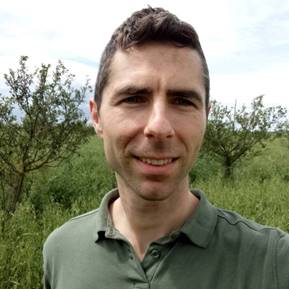Tom Staton recently passed his PhD viva at the University of Reading (UK). The PhD investigated the implications of higher biodiversity in agroforestry systems - is this biodiversity beneficial (e.g. pollinators and predators) or problematic (e.g. pests and weeds)? The study revealed that integrating trees into arable land does improve biodiversity but leads to a change in the plant and insect communities, for example, agroforestry was particularly favourable for perennial and creeping plants and less mobile insects. There was evidence to suggest higher pollination and predation of pests in agroforestry, in terms of diversity of relevant functional traits. The thesis also found that management of the vegetation below the trees to encourage flowering significantly improved the natural control of tree aphids and increased bee visitation. Financial modelling concluded that integrating apple fruit trees into arable fields can improve farm income, but only after a substantial time-lag, the extent of which particularly depends on fruit yield and price.

These findings have practical implications for the design and management of alley-cropping agroforestry systems. Implementing agroforestry systems led to a change in pest management issues compared with monoculture arable farming: although annual seeding-spreading weeds and mobile, specialist pests tended to be suppressed in agroforestry, perennial weeds and generalist pests such as slugs can be a challenge. Therefore, farm management should adjust for this, for example by selecting crops which are competitive against these threats - oats seem to be a good choice. Furthermore, management to encourage flowering vegetation below the trees encouraged the beneficial aspects of biodiversity such as natural enemies and pollinators. In addition, selection of appropriate tree species / varieties, and gaining expertise in their management, is critical for these systems to be profitable. The project used a combination of methods including new data collection of plants and invertebrates from working farms in the UK, and computer modelling techniques. Particular thanks go to the project supervisors, led by Dr Robbie Girling, to the farmers of the field sites, and to the project partners including The Woodland Trust.
Link to the thesis: here
Tom Staton












